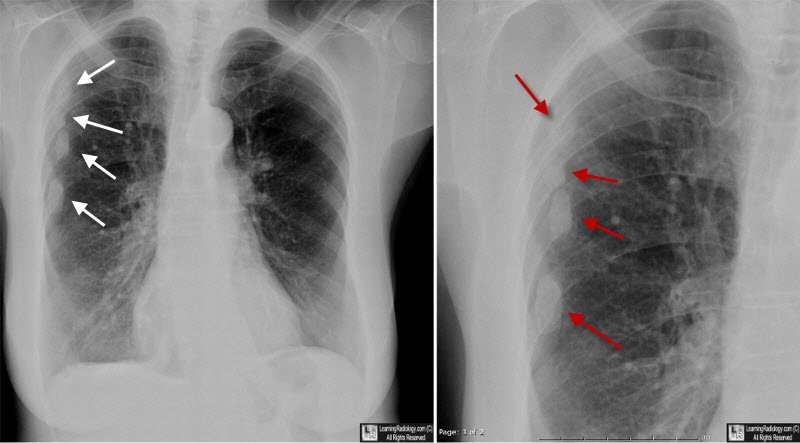|
|
Healing Rib Fractures
General Considerations
- Rib fractures are most common traumatic chest injury
- They are mostly important for their associated morbidity including pneumothorax, hemothorax, lacerations of the liver or spleen, pneumonia or atelectasis from splinting
- Rib fractures classically take at least 6 weeks to heal, some lasting for up to 6 months before completely pain free
- Displaced fractures will take longer to heal
- Ribs 4-9 are most frequently fractured and rib fractures usually occur at the point of impact
Clinical Findings
- Pain on inspiration
- Dyspnea
- Point tenderness or crepitus
Imaging Findings
- Non-displaced acute rib fractures may not be visible on conventional radiographs in as many as 50% of cases
- As the rib ends become displaced over time and bony callus begins to form, the fracture may become more evident on follow-up examination
- Periosteal reaction may be seen 7 days after injury
- Callus formation may produce nodular densities in the rib at the site of healing which should not be confused for a pulmonary nodule
- A rib series using conventional radiography will usually distinguish the source of the “nodule”
- Complete healing should occur by 12 weeks
- CT is more sensitive than conventional radiography in detecting rib fractures, which may still not be evident because of the plane of the cut
- US may also show cortical discontinuity

Healing Rib Fractures. Chest radiograph on left demonstrates multiple rib fractures with bony callus about the fracture sites (white arrows). The close-up image from a rib series again demonstrates multiple displaced healing rib fractures (red arrows).
Keep Your Eyes on the Ribs: The Spectrum of Normal Variants and Diseases That Involve the Ribs. Adam R. Guttentag, MD, and Julia K. Salwen. RadioGraphics, Sept. 1999, Vol. 19, Issue 5
|
|
|